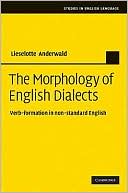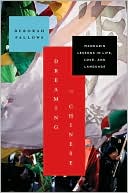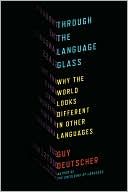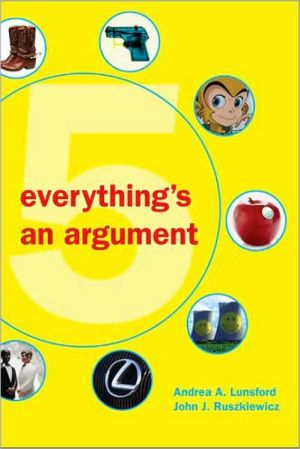The Morphology of English Dialects: Verb Formation in Non-standard English
Search in google:
Where do dialects differ from Standard English, and why are they so remarkably resilient? This new study argues that commonly used verbs that deviate from Standard English for the most part have a long pedigree. Analysing the language use of over 120 dialect speakers, Lieselotte Anderwald demonstrates that not only are speakers justified historically in using these verbs, systematically these non-standard forms actually make more sense. By constituting a simpler system, they are generally more economical than their Standard English counterparts. Drawing on data collected from the Freiburg English Dialect Corpus (FRED), this innovative and engaging study comes directly from the forefront of this field, and will be of great interest to students and researchers of English language and linguistics, morphology and syntax.
List of figures xiiList of maps xivList of tables xvPreface and thanks xviiAcknowledgement of sources xviii1 Introduction 11.1 The past tense - a descriptive approach 11.2 Terminology: strong-weak vs. irregular-regular 31.3 Classification of strong verbs 51.3.1 Ablaut series, vowel gradation 51.3.2 Dental suffix 61.3.3 Abstract formal identity 71.4 Standard vs. non-standard English 121.5 Materials employed 132 Past tense theories 172.1 Introduction 172.2 Chomsky and Halle (1968) 182.3 Lexical Phonology and Morphology 212.4 Optimality Theory 262.5 Stochastic Optimality Theory 322.6 Psycholinguistic theories 332.7 Connectionist approaches 362.8 Network model 382.9 Natural morphology 402.9.1 Universal morphological naturalness 402.9.2 Language-specific morphological naturalness 422.9.3 Criticism 452.9.4 Compatibility with other models 452.10 Conclusion 463 Naturalness and the English past tense system 493.1 General features of the English verb system 493.2 Dominant features 513.3 Standard English verb classes 513.3.1 Verb class 1: PRES ≠ PAST ≠ PPL 523.3.1.1 Vpres ≠ Vpast ≠ Vppl 533.3.1.2 -participle 533.3.2 Verb class 2: PRES ≠ PAST = PPL 553.3.2.1 Vpres ≠ Vpast = Vppl 553.3.2.2 No vowel change 573.3.3 Verb class 3: PRES = PPL ≠ PAST 583.3.4 Verb class 4: PRES = PAST ≠ PPL 583.3.5 Verb class 5: PRES = PAST = PPL 593.3.6 Summary 593.4 The central characteristics 613.5 Non-standard verb paradigms as test cases 613.5.1 New non-standard weak verbs 623.5.2 New non-standard strong verbs 623.5.3 Differentnon-standard strong verbs 633.5.3.1 Two- instead of three-part paradigms 633.5.3.2 One- instead of two-part paradigms 653.5.4 Summary 654 Sellt and knowed: non-standard weak verbs 664.1 Introduction 664.2 Data from FRED: what to count? 684.3 Regional comparison 694.4 Individual verbs 704.4.1 Northern features 734.4.1.1 Past tense gaed and gi'ed 734.4.1.2 Past tense tellt and sellt 734.4.2 Southern features 774.4.2.1 Past tense runned 774.4.2.2 Past tense gived 784.4.2.3 Past tense knowed, growed, blowed and throwed 794.4.2.4 Historical dialect data 814.4.2.5 Past tense drawed 824.4.2.6 Relative frequencies 834.4.3 Western feature 844.4.3.1 Past tense seed 844.4.4 General features 874.4.4.1 Past tense knowed 874.4.4.2 Past tense catched 894.5 Verb classes 914.6 Statistical models 924.7 Comparison with COLT 954.8 Summary 965 Drunk, seen, done and eat: two-part paradigms instead of three-part paradigms 985.1 Introduction 985.2 'Bybee' verbs 985.2.1 History 1015.2.1.1 Past tense forms of begin 1035.2.1.2 Past tense forms of drink 1055.2.1.3 Past tense forms of sink 1065.2.1.4 Past tense forms of sing 1075.2.1.5 Past tense forms of ring 1085.2.2 Historical dialects 1095.2.3 Data from FRED 1105.2.3.1 Verbs 1105.2.3.2 Singular vs. plural? 1105.2.3.3 Regions 1115.2.4 Comparison with COLT 1135.2.5 Cognitive explanation 1145.3 Past tense seen 1205.3.1 Introduction 1205.3.2 History 1205.3.3 Historical dialects 1215.3.4 Data from FRED 1215.3.5 Conclusion 1255.4 Past tense done 1255.4.1 Introduction 1255.4.2 History 1265.4.3 Previous studies 1275.4.4 Historical dialects 1275.4.5 Data from FRED 1295.4.6 Data from COLT 1325.4.7 Done in American English 1335.4.8 Cognitive explanation 1345.5 Counterexamples: past tense eat, give and see 1365.5.1 Introduction 1365.5.2 Past tense eat 1365.5.2.1 History 1375.5.2.2 Historical dialects 1375.5.2.3 Data from FRED 1385.5.2.4 Conclusion past tense eat 1405.5.3 Past tense give 1415.5.3.1 History 1415.5.3.2 Historical dialects 1415.5.3.3 Data from FRED 1425.5.4 Past tense see 1445.5.4.1 Historical dialects 1445.5.4.2 Data from FRED 1445.5.4.3 Data from COLT 1455.5.5 Conclusions 1465.6 Chapter conclusion 1476 Come and run: non-standard strong verbs with a one-part paradigm 1496.1 Past tense come 1496.1.1 Introduction 1496.1.2 History 1506.1.2.1 Regular development 1506.1.2.2 Standard English past tense came 1536.1.3 Historical dialects 1586.1.4 Data from FRED 1636.1.5 Data from COLT 1656.1.6 Summary and explanation 1666.2 Past tense run 1686.2.1 Introduction 1686.2.2 History 1686.2.2.1 Present tense 1686.2.2.2 Past tense 1746.2.3 Historical dialects 1766.2.4 Data from FRED 1766.2.4.1 Procedure 1766.2.4.2 Quantification 1786.2.5 Data from COLT 1796.2.6 Cognitive explanation 1796.3 Chapter conclusion 1807 Conclusion: supralocalization and morphological theories 1837.1 Summary of findings 1837.2 Supralocalization? 1857.3 Morphological theories revisited 1887.3.1 Rules vs. representations 1887.3.2 The role of frequency 1917.3.3 Accounting for diachronic developments 1917.3.4 Non-standard data 1947.4 Summary 197Appendix 1 Verb classification 198Appendix 2 SED localities and list of counties 205Bibliography 207Index 216








